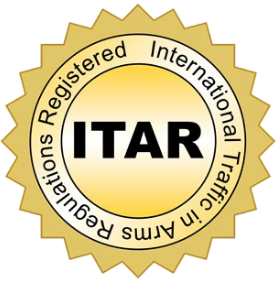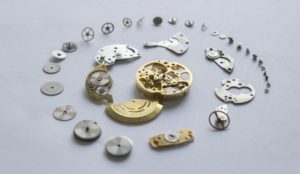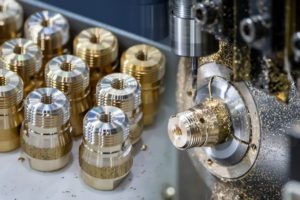CNC mills are highly effective solutions for manufacturing small, non-rounded parts with complex geometries. The number of axes that the machine offers can provide the user with various degrees of flexibility and control to create finished products with greater precision in large quantities.
5, 4, and 3-axis CNC milling machine is a vertical milling machine that utilizes computer numerical control to mill multiple axes simultaneously. Computer numerical control automates CNC machine functions using embedded software without sacrificing precision, detail or quality.
Instead, the machine references preprogrammed instructions for manufacturing a part faithful to its design specifications. This is especially useful for large-scale manufacturing or operations where an operator might be overseeing multiple production runs at the same time.
To help you decide which type of CNC mill is best suited for your needs, we will be comparing 3, 4, and 5-axis machines in this guide. First, let’s begin with a 3-axis model.
What Does 3-Axis CNC Machining Mean?
3-axis CNC mills are some of the most common types of milling machines used in shops today. They move along horizontal X and Y axes while the Z axis moves vertically. Like their 4 and 5-axis counterparts, they are effective solutions for manufacturing large quantities of parts with high standards for precision.
However, the most notable limitation of a 3-axis CNC mill is the limited range of motion. Because there is only one axis that can move vertically, it can be difficult to reach all sides of a workpiece. This is where a more sophisticated machine, such as a 4 or 5-axis mill can prove more effective.
What is a 4-Axis CNC Mill?
A 4-axis CNC milling machine adds an additional rotary axis to the X, Y, and Z axes, allowing for a more versatile range of motion. The A-axis is typically attached to the spindle of the machine and can rotate the parts or fixture a full 360 degrees.
One of the primary advantages of a 4-axis CNC mill is that it can rotate the workpiece on the A-axis, allowing for more sides to be machined in a single setup. This reduces cycle times and can lead to significant cost savings, especially on larger projects. This additional degree of freedom gives 4-axis CNC mills greater flexibility than 3-axis models, especially when machining curved or organic shapes.
Another advantage of some 4-axis CNC machines is that it can allow for simultaneous operations. For example, while the workpiece is being milled on one side, it can also be drilled on another. This increases productivity and can further reduce cycle times and costs.
What is a 5-Axis CNC Mill?
A 5-axis CNC milling machine adds an additional axis to the X, Y, Z, and A axes, allowing for an even greater range of motion. The B-axis is attached to the table of the machine and can rotate 360 degrees.
The primary advantage of a 5-axis CNC mill is the increased versatility. The B-axis allows for nearly all sides to be machined in a single setup, which allows for an expanded range of functions it can perform at a single time. This additional degree of freedom also gives 5-axis CNC mills more flexibility over 4-axis models, especially when machining curved or organic shapes.
A 5-axis CNC machine proves significantly more effective for designing parts with complex geometries or unique features that require immense precision. The greater level of user control enables the operator to create a standard or nonstandard part with superior detail.
Considerations for Choosing a 3, 4, or 5-Axis CNC Machine
The Complexity of a Part’s Design
One of the primary considerations when choosing between a three, four, or five-axis CNC machine is the complexity of the part’s design. If a part has a simple geometry, such as a cube or rectangular prism, then a three-axis machine will likely be sufficient.
On the other hand, if a part has more complex features, such as curved surfaces or multiple levels, then a more sophisticated machine will be necessary. In general, the more complex the design, the more axes will be required.
Work With a Professional CNC Milling Service for Your Next Project
Don’t know what type of CNC milling machine will best suit your needs? At Advance CNC, our machining professionals can partner with you to create mid-sized and large-scale batches of parts that you need to scale your operations. To learn more about partnering with us to streamline your operations, contact us today for a free quote.






